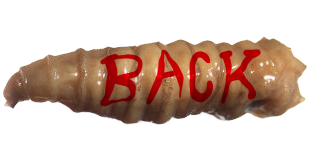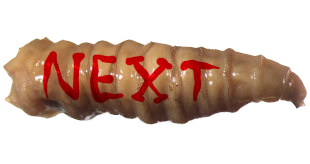Written by Jonathan Wojcik
An Introduction to Gegege no Kitaro
Gegege no Kitaro is something I feel like I bring up a lot on this here website, but it's been many, many years since I've devoted a full blown article to, and that's only if you count my forgotten, decomposing video game sprite galleries from what feels like an entirely different lifetime, which simply will not do - especially when I know many of you are still only barely familiar or entirely unfamiliar with one of the most culturally important works of fiction in modern Japan, an influence behind far more things you've consumed than you can possibly ever imagine, and part of one of the most inspirational art stories you will quite possibly ever hear...

Japan Times
When I first learned of Kitaro myself back in the late 90's, it felt like I'd stumbled onto a secret known only to a handful of other English-speakers, and some twenty years later...that hasn't really changed. Kitaro and his friends remain only barely recognized by the average Western geek, despite the fact that they're as familiar to the Japanese as Godzilla, Astroboy, Doraemon or Totoro, and if anything, enjoy an even deeper level of sentimental reverence.
This is due in no small part to the kind of man behind Kitaro, the World War II veteran and esteemed historian Shigeru Mizuki, who
Shigeru's life could have been (and as a matter of fact, already is) an epic manga adventure of its own; a peace loving young artist with dreams of a creative future, forced to serve a military he despised for a cause he despised even more, only to lose his entire left arm in a bombing by the allied forces. The arm he could draw with.
This was, astonishingly, only one of the worst things this man survived by the skin of his teeth during one of the darkest wars in memory, yet he never gave up hope on himself, on the world, or his drive to create. Following the war, he slowly taught himself to draw once again with his right hand, bounced from job to job in Japan's wildly experimental manga scene, and delved deep into his childhood fascination with Japan's traditional ghosts, goblins, oni and other youkai.
Mizuki would, in fact, come to be seen as Japan's utmost authority on youkai mythology, and is often credited with personally bringing them back into the mainstream of a post-war culture that had all but discarded them. If not for his influence, countless classic monsters may have never enjoyed the presence they do in today's manga, anime and video games, and Japan's entire cultural landscape may have looked noticeably different.
Even The New Yorker ran its own detailed article further detailing the artistic impact of a man most of its readers would have never heard of before, and it's not a bad read if you're itching to know more in English, though it does make an admittedly weird comparison between Kitaro and Shrek, of all things.
I guess it's not all that far-fetched if our main takeaway is that Kitaro, like the green ogre, would have been a more frightening, more loathsome monster and villain in any other narrative, since that's sort of what he once was in his very own narrative.
I touched on this first in my post on The Dark Yo-Kai Watch, but the original, prototypical Kitaro was an outright malevolent ghoul created by an entirely different artist, Masami Itou, in a significantly darker and more horrific picture show known as Hakaba Kitaro, or Graveyard Kitaro. Little has survived to this day of the original artwork, as the show came and went all the way back in 1933, when Shigeru himself would have been only ten or eleven years old.
Scene from Hakaba Kitaro, 2008 Anime Adaptation
It wouldn't be until 1960, some three decades later, that Kitaro's publisher would seek to resurrect the character for Japan's modern comic scene, and a 38 year old Shigeru Mizuki would be hired on to reinvent a forgotten character.Most of you reading this aren't nearly 38 yet, and yet, almost all of you probably have regrets and worries about how much you've accomplished or may yet accomplish. Take it to heart that this guy was almost forty before he even began work on something that's been just about worshipped in his country for over half a century since.
More from Hakaba Kitaro
To Shigeru's credit, his subsequent reinvention of Kitaro was extensive enough to more than qualify as his own personal, original creation, inspired by its namesake but barely recognizable. Slightly more sympathetic than Itou's brutal ghoul, Mizuki's initial vision of Kitaro was nonetheless still an ominous and sometimes morally ambiguous figure, a mischievous human-youkai hybrid born one appropriately stormy night from the grave of his dead, youkai mother.A misfit to both the world of humans and the world of youkai, this Kitaro had little emotional attachment to either, and fared mostly for himself with the guidance of his father, co-star, and one of the most wonderful character concepts to come out of his country's already rich creative landscape...
Medama Oyaji, best translated as Old Man Eyeball, is all that remains of Kitaro's father, who already looked more like a mummified corpse well before his death, so either he was the "youkai" part of the relationship or there may be some "side effects" to being a youkai's lover. It's actually never completely clear which parent was which, and it's been hard for us to find any final confirmation of it from an official enough source even in Japanese.
We've also never really learned much of anything about this character's original life or even his original name, but it was the birth of his son that awakened his fading soul with just enough energy to reanimate that single, tiny body part, and the little eyeclops is almost always by his child's side...or even riding around inside Kitaro's own empty, left eye socket.
...As an aside, can you ever imagine these characters taking off in any predominantly English-speaking country? Even just a couple decades ago, Christian parents were blasting Pokemon and Harry Potter for being "dark and demonic." The most we can get away with in our mass-produced, mainstream children's media today is still hardly more grotesque than Hotel Transylvania, and yeah, I do feel kind of deprived. I was downright DESPERATE as a child for weird, frightening monsters who got to be the heroes, and the closest I ever got was maybe the animated Slimer's status as the Ghostbuster's weird pet, or a few short-lived action cartoons like Toxic Crusaders and Swamp Thing.
Did I mention that this little guy "eats" by taking hot baths in tea? How infuriatingly precious is that?!
Medama Oyaji is not only precious by way of being a tiny eyeball man who fits in a teacup, but comes across as a sweet and caring parental figure even in the grimmer and grislier Hakaba Kitaro continuity, where his son seems to return relatively little affection or even all that much concern for his own father's safety. There's a point at which Medama Oyaji is even thrown out in a toilet by someone who thought he was dead, and Kitaro hardly misses him as he makes his arduous, tiny way back to his child.
This kind of cynicism may explain the rather shaky popularity of these early stories, which were, in fact, even blasted by some parents for how grisly they were, but all of that would change after Kitaro's 1965 jump to Shonen Magazine.
Kitaro Battles Sazaeoni
Kitaro had, by this point, already tussled with a number of other, often unambiguously villainous Youkai, and the once unsettling monster kid quickly evolved into a full blown action hero. Working as a "youkai detective" to maintain peace between humans and monsters alike, facing a procession of foes drawing not only from every possible corner of Japanese legend, but almost as often from Mizuki's own imagination, Greek myth, Western demonology and even Universal Studios horror films.While not generally thought of as a "ghost" or "undead" creature, Kitaro held on to his association with the grave, always bouncing back from any conceivable death or dismemberment his enemies might manage. His array of bizarre powers and weapons would grow rapidly from story to story, and he'd develop a circle of equally weird allies from the youkai realm.
These exciting new adventures were so well received that a television deal was struck almost immediately, and the first hit Kitaro anime began airing in 1968. Toys, snack foods and countless other cross promotions swiftly followed as Kitaro Mania swept across Japan, and for over fifty years now...it's never really stopped.
A second, full-color television series would air only three years later in 1971. Another reboot came in 1985, then again in 1996 and two new series in the 2007's, one of them an 11-episode adaptation of the grislier Hakaba Kitaro tales. Around a dozen films have been released, both animated and live action, along with at least as many video games, and in Shigeru's hometown of Sakaiminato, you can visit 153 bronze youkai lining Mizuki Shigeru Road, stop to eat at the official Kitaro cafe, and end at the Mizuki Shigeru art museum.

Photo by Fukachan-Ryoko
A lot of creators, series and characters compete for the title of "most famous," "most loved" or "most important" to Japan, but it wouldn't take much of a stretch to nominate a dead man's eye and his weird son for those honors, and without Shigeru or Kitaro, Japan's pop culture environment may very well have looked quite a bit different - along with the not-insignificant volume of media manga and anime have inspired throughout the rest of the world.
To close out this Kitaro crash course, let's go over the rest of the series most important figures:
NURIKABE
Photo by FranckybitoyThe Nurikabe is a classic youkai said to block off paths and lead travelers astray. In artwork dated back to 1801, the creature was depicted as a three-eyed, doglike beast with a flattened face, which is definitely cool as heck, but Shigeru's simple, stony wall with eyes has a much more iconic and thematic appeal, now imitated endlessly by other youkai-centric media.As a giant, sentient slab of solid concrete, this particular Nurikabe is adept at blocking attacks and happy to serve as one big living shield to anyone in danger, accompanying Kitaro whenever an adventure calls for a strong physical defense.
ITTAN-MOMEN
This youkai is traditionally described as an animated paper or cotton ribbon that flies of its own volition and strangles or suffocates victims. Shigeru's version elaborates little on the concept, except that this Ittan-momen is possibly Kitaro's most selfless and heroic ally, his body about as fragile as you might expect but never backing down from a fight. He's even been seen slashed into a dozen pieces, only to be stitched back together and pick himself right back up.What Ittan-momen lacks in durability, he makes up for in speed, cunning and his ability to fly, frequently transporting Kitaro and others on his back.
KONAKI-JIJI
In legend, this creepy old man takes the illusionary form of an abandoned, wailing infant until some foolhardy human tries to pick him up and comfort him, at which point the youkai grabs on tight and turns into stone, apparently just for laughs.In Gegege no Kitaro, Konaki-jiji can turn any part of himself into stone, or even transform into a craggy, spiked boulder, acting as Kitaro's most physically offensive backup.
SUNAKAKE-BABA
By pure coincidence, this Youkai's name can be translated as "Sand Witch," a great pun few English translations have been able to resist. Pretty much all this Youkai does is appear before people and throw a handful of dirt in their face, but she's apparently good enough at this to be another of Kitaro's go-to battle companions, and makes an especially tricky duo with her husband, Konaki-jiji.NEKO-MUSUME
Literally "cat girl," but far removed from - not to mention older than - the masses of moe-eyed, fluffy-eared freakazoids the term more commonly entails. More recent iterations of the Kitaro anime, lacking any hands-on involvement by Shigeru, have unfortunately pushed Neko-musume's design closer to a more "marketable" (creepy) anime schoolgirl, but the truest and purest Nekomusume, the way Shigeru was still drawing her, will always be this pudgy, sawtoothed little delinquent.Capable of shifting between her more human and more monstrous forms at the drop of a hat, Neko-Musume has an unrequited crush on Kitaro and a fully requited hatred of our next character.
NEZUMI-OTOKO
Here he is; the single most prominent character in the series after Kitaro and Medama Oyaji themselves, and far too big an asshole to not be a fan favorite. An original Shigeru creation that translates to either "Rat Man" or "Mouse Man" (the same term in Japan), this rotten bastard's first most defining characteristic is that he's basically a piece of shit, and his second is that he smells like one.He's a cowardly, conniving, two-faced, back-stabbing con artist who's also poisonously filthy, swarming with lice and capable of almost killing someone with the sheer reek of his gas, and everybody still hangs out with him.
Rat-Man even tries time and again to get Kitaro killed, finding him "annoying" and selling him out to one villain after another, but this franchise never actually treats him as one of the villains himself. In fact, even knowing fully well about the constant murder plots, Kitaro still casually pals around with this guy like it's nothing.
It's pretty much only Cat-girl who ever really gives the half-rodent what's coming to him, though even that seems more a matter of predatory instincts than any sensible recognition of a literally and figuratively toxic person.
It's a character archetype I have to admit I always love the most; that utterly, utterly worthless jackass who can sink as low as it gets and still gets to be one of the "main characters" because, at the end of the day, nobody around him seems capable of taking him seriously.
BACKBEARD
This brings us to the one officially villainous character we should give a little focus, since this guy has figured in as one of Kitaro's archest adversaries in every single manga and anime series to date, so of course I had to use that great drawing of this ultimate evil driving around in his little car.Many sources over the years have been a bit confused as to Backbeard's origins, but interviews with Shigeru Mizuki make clear that the name is a corruption of bugbear, and this floating, one-eyed shadow blob is pretty much supposed to be the bogeyman.
Backbeard is basically the lord and master of what the series always refers to as western "youkai"...such as vampires, werewolves, mummies, zombies, witches, gorgons, fish people, devils, and even Frankenstein's monster. Basically, all things supernatural outside of Japan and China are a part of Backbeard's domain, and he's hell-bent on finally ticking those off his map in any way he can.
This about wraps up our little quickie character guide, and that about wraps up your introduction to Kitaro and Shigeru Mizuki. Stay tuned for some reviews of specific Kitaro manga stories and possibly more! We're just a day away from December - the very last month of Halloween!
MORE HALLOWEEN FEATURES:























